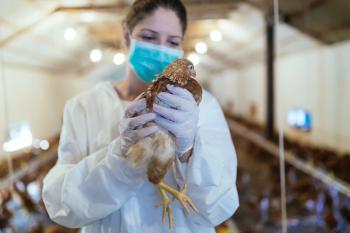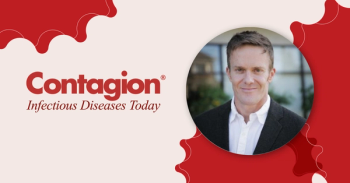
Using Twitter to Disseminate Journal Visual Abstracts to Clinicians
Debra A. Goff, PharmD, FCCP: So here’s my strategy. I am in The Lancet Infectious Diseases. I hit the Twitter bird, which now is going to create a link to the abstract. The whole article is behind a firewall, but it goes to the abstract. And then my tweet will start out as #surgeons, because surgeons look at that.
John Nosta, BA: So that’s your shout-out. That’s your call.
Debra A. Goff, PharmD, FCCP: That’s like the big umbrella. And then I tweet a compelling topic that would engage them to look at this tweet. So that’s the art of the tweet. So I sit and think about it for a second, and then I type it out. But then I will tag the key surgical influencers. So I would have Dr. John Alverdy, MD, the head of surgery at The University of Chicago; Dr. Chris Ellison, MD, the head of surgery at The Ohio State University; Dr. Ben Nwomeh, MD,…I know they personally know me, so there’s a trust there. I know there’s a high probability that they’re going to retweet that tweet because it’s relevant. “Look what Debbie sent us. I don’t read this journal, and oh my goodness, this is relevant to me.” That’s how I target a tweet.
So I have lists of surgeons, orthopedic surgeons—they all just read about their own specialty. I have lists of cardiac surgeons. When I see articles that are relevant to a critical care physician, because the president of the Society of Critical Care is on Twitter, I’m just tweeting it right to him or her. I know he or she will disseminate that throughout. So it’s really a very powerful way, but I definitely have a strategy.
I’m part of the Society of Infectious Diseases Pharmacists, and I know they have power tweeters who are responsible. Every day they’re on it. So if I tweet something with sidpharm in it, I know it’s going to go out to all infectious disease pharmacists, and that’s the audience I’m trying to meet. I know who the power tweeters are in South Africa. Knowing your audience helps you understand how to disseminate your message rapidly.
John Nosta, BA: So that’s for someone who is telling a story. You and I are tweeters, but the reciprocal to that is “I’m going to follow you,” or “I’m going to watch what you’re saying,” or “I’m going to follow that hashtag.”
Debra A. Goff, PharmD, FCCP: Yes.
John Nosta, BA: Before we get into hashtags, I use Twitter analytics a little bit. I’ll go into the analytics and actually look at my tweets and see which ones get a lot of hits. I’ll get 10,000 hits, or 30,000 hits, or 40,000 or 50,000 impressions on some of these. If I think it’s catching on, I’ll just cut and paste it and retweet it again. I think people think that if they say it once, it’s enough, but that’s not true.
Debra A. Goff, PharmD, FCCP: Right.
John Nosta, BA: You don’t want to be obnoxious and overdo it.
Debra A. Goff, PharmD, FCCP: But you have to also respect that there is so much on Twitter, and you can’t possibly see everything. It’s very easy to miss something unless you’re obsessed and are on it all the time. But if you’re looking at it once or twice a day…so that’s actually appropriate. In our study, we found that the most retweeted tweets by surgeons in infectious diseases that I sent were the ones that had links to them. So they either had a picture or were linked to evidence-based medicine articles. You can’t really say much in the limited character space that you have. You can’t really educate somebody on an appropriate use of an antibiotic. “Here’s this new antibiotic, and here’s what it’s used for.” It’s just not the place to be doing that. There’s not enough room to convey enough information to make it useful. So having a link is key.
John Nosta, BA: Links are key.
Debra A. Goff, PharmD, FCCP: Yes.
John Nosta, BA: Usually, when I’m at home and I’m on my computer, I’ll go to the paper and cut and paste or screen grab a paragraph, right?
Debra A. Goff, PharmD, FCCP: Yes. I take a yellow pen, which is old-fashioned, right? I sometimes use a highlighter or take a picture of it.
John Nosta, BA: Because we underestimate the power of the visual.
Debra A. Goff, PharmD, FCCP: Absolutely.
John Nosta, BA: Sometimes I’ll even just grab a picture of something to put into my tweet.
Debra A. Goff, PharmD, FCCP: I have to give our surgeons credit. They are creative. They work with their hands. They are really artists in the operating room. Annals of Surgery now requires a visual abstract because they know people think in terms of pictures. All we do is read. And so if you can take your abstract, which is 200 to 300 words, and summarize it into a visual…. And so, the editor of Annals of Surgery constantly tweets pictures of summaries.
John Nosta, BA: Yes. No, that’s powerful.
Debra A. Goff, PharmD, FCCP: It is so brilliant.
John Nosta, BA: Otherwise you see a logo of the journal.
Debra A. Goff, PharmD, FCCP: Right.
John Nosta, BA: That just doesn’t have any power.
Debra A. Goff, PharmD, FCCP: Yes, you don’t care. And I’m watching other medical journals realize the power of visual abstracts. JAMA [The Journal of the American Medical Association], which is a very prestigious journal, is starting to require them. And where did that start to get disseminated? Twitter.
John Nosta, BA: Beyond that, think about infographics.
Debra A. Goff, PharmD, FCCP: Yes.
John Nosta, BA: Maybe medical departments should have graphics experts?
Debra A. Goff, PharmD, FCCP: They do. We have medical illustrators at The Ohio State University. We have a whole graphics department. “Here’s what I’m trying to say. Make it pretty and make it visual. This is targeting patients.” So there’s a different way you write that…if you’re targeting other infectious disease doctors.
John Nosta, BA: But a really good bar chart or pie chart that shows the distribution of a pathogen in a particular disease could be really powerful. You know, the dirty little secret about Klebsiella or something. So that’s powerful, even as visuals.
Debra A. Goff, PharmD, FCCP: The CDC [Centers for Disease Control and Prevention] has infographics galore. They do such a great job. I always tell people, “Go to the CDC. The information is free. You can hang this in your office.” While patients are sitting and are waiting, they’re looking at stuff. So it’s a great way to convey information.
John Nosta, BA: OK, so let’s recap. So the tweet: Write it in a way that it is going to get attention.
Debra A. Goff, PharmD, FCCP: Yes.
John Nosta, BA: You can use capital letters. What do they say on Twitter? Using capital letters is like shouting.
Debra A. Goff, PharmD, FCCP: It’s like shouting.
John Nosta, BA: Sometimes it’s worth shouting, but recognize that you have to use that judiciously.
Debra A. Goff, PharmD, FCCP: Right.
John Nosta, BA: And sometimes asking for a retweet is not the end of the world. “Please RT.” Create a compelling headline, right? Over time it gets easier. Right now it sounds very daunting, but we bang out tweets left and right. It’s not key information kind of stuff.
Debra A. Goff, PharmD, FCCP: I tell people that when I got on Twitter and had no followers, I just started following people and looking at how they tweeted. I looked at what made me look at a person’s tweet. You start observing. It’s just like a style of writing. When you write a medical article, and it’s your research, how do you title your article? Because people will say, “This is compelling. I want to read this whole article.” It’s no different.
John Nosta, BA: We call it clickbait.
Debra A. Goff, PharmD, FCCP: Yes, exactly. We all fall for it.
John Nosta, BA: We see so many articles that use clickbait. It’s horrible.
Debra A. Goff, PharmD, FCCP: But we fall for it.
John Nosta, BA: Seventy percent of videos that are clicked on through YouTube are clicked on because of the “Also watch this” note on the side.
Debra A. Goff, PharmD, FCCP: Oh, really? Wow.
John Nosta, BA: So we’re seduced by that. I think we have to know that. When you talk to a patient, you use patient-friendly language. When you talk to a clinician, you use clinician-friendly language. I want to back up to the idea of, “I’m not going to tweet. I’m just going to listen.”
Debra A. Goff, PharmD, FCCP: Yes.
John Nosta, BA: OK, so I’m a surgeon. I’m an infectious disease specialist. I’m a nurse. I’m a pharmacist. I want to use Twitter to listen. How do I do that?
Debra A. Goff, PharmD, FCCP: I have many who do that. They don’t want to tweet, but they’ll come up and say, “Debbie, I love your tweets.” I’m like, “Wow, I’m reaching them,” and that’s fine. You don’t have to be actively tweeting. If you don’t want to have a big voice, you don’t have to. But I have learned more by whom I follow on Twitter than by any other vehicle I’ve used in my career.
John Nosta, BA: Yes, me too.
Debra A. Goff, PharmD, FCCP: Because I don’t just learn medicine. I learn marketing. Honestly, we’re marketing our knowledge.
John Nosta, BA: Sure, you’ve got to sell your knowledge.
Debra A. Goff, PharmD, FCCP: I’m trying to teach you the best way to do this. If I don’t know how to effectively communicate that, I fail. So that’s marketing. I follow you or someone who I didn’t know about until my student told me, “You need to follow him.” It’s like digital health. What’s that? Honestly, it was a learning curve. And I’m like, “Wow.” So each person brings something different to the table.
Newsletter
Stay ahead of emerging infectious disease threats with expert insights and breaking research. Subscribe now to get updates delivered straight to your inbox.




